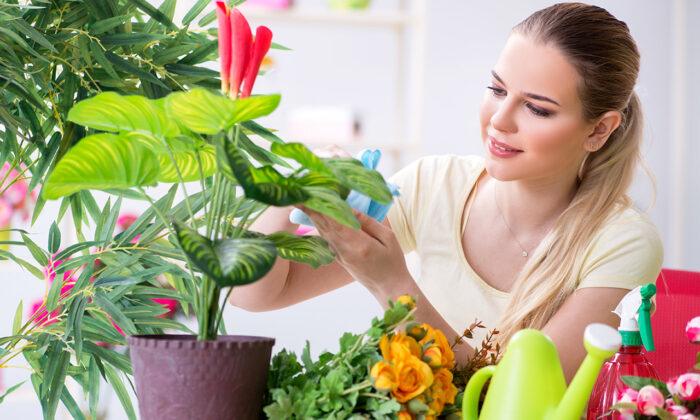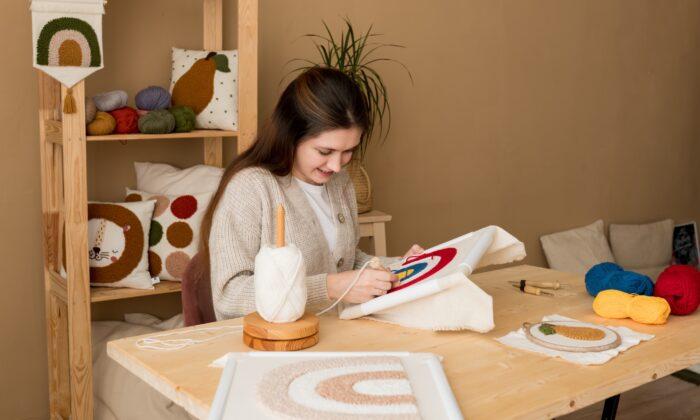Big, leafy indoor plants have been all the rage and one of the most popular fads for the past few years. They’re obviously not a new thing, but it seems that every new home turns to these green beauties to decorate and fill each nook and cranny of space.
But for me, indoor plants have become more than just a fad or pretty decoration. Over the past decade of learning how to take care of them, I’ve grown to appreciate the process and seeing my plants thrive with good care.
I love the weekly routine of watering, feeding, and tending to my plants. I love seeing the physical growth that results from my dedication to them. I love that I can share the growth with friends by propagating or dividing plants. I love the air purifying effects that they emit.
But like many things in life, taking care of indoor plants isn’t “set it and forget it.” You can’t simply find a pretty plant, place it in a cute pot, and call it a day. It takes knowledge of what that specific plant needs and a routine for caring for it.
1. Locate the best spots in your home
If there’s one thing I’ve learned about how to make plants thrive, it’s this tip. Most house plants don’t require a lot, but they do require sunlight. Even the best low-light plants require sunlight, so this is essential.You want to find spots in your home that receive between 4-8 hours of natural light. Each plant varies with how much light they prefer, so make sure you know that before placing it in it’s home.
I aim to place all of my plants within several feet of a larger window. The majority of my plants are in our playroom/sunroom, where we have both east facing and west facing windows, which provides bright but indirect light most of the day.
2. Choosing the right plants to fit your space
After you determine some well-lit locations in your home, you can then move onto the fun part– deciding which plants you’ll bring home from the greenhouse. Many greenhouses are divided into sections called “bright/medium” and “low light”.Make sure you’re aware of what type of light is needed for the plants you choose so that it can properly grow. Just check the tag inside the plant. It can be overwhelming knowing which plants will do well in the space you’ve got, so here are my favorites that I’ve successfully kept alive for years. These are all low-maintenance plants that are pretty easy to care for if you place them in the right type of light.
- Pothos
- Snake plant
- Philodendron
- Jade
- Hoya
- Rubber plant
- Nephthytis
- Christmas cactus
- Aloe
- Fiddle-leaf fig
- Monstera
- ZZ plant
3. Potting and repotting plants
There’s so many pretty pots to choose from but here are a few suggestions I have when potting your new plants.4. Have a regular watering and fertilizing schedule
Having a regular watering schedule has been one of the main reasons why I’ve had success with keeping my plants alive and thriving. I’ve come to look forward to this routine each weekend and instead of looking at watering my plants as just another chore, it’s an enjoyable task as I carefully take notice of any new growth or what each plant may need.I’ve developed a weekly watering schedule that fits about 75% of my plants. There’s not a one-size-fits-all approach to watering plants, so this goes back to knowing what your plants need.
5. Fertilizing, pruning, and cleaning your plants
In addition to my weekly watering schedule, I also like to give my plants some extra care and nutrients.Once a month, I gather most of my plants onto my kitchen table. I find it easiest to have them all in one spot so the mess I make is contained on the table. I aerate the soil, prune any dead growth, clean the leaves with a spray bottle, and fertilize them. I explain how I do each of these steps below.
For plants that have larger leaves, I then wipe their leaves with a clean microfiber cloth to get the dust off. This makes a big difference with how vibrant and shiny the leaves look.
6. Propagating your plants
One of the best parts about many indoor plants is the ability to propagate (the process of creating new plants) and grow yourself another plant. I’ve propagated several different kinds of plants and it’s actually a very easy thing to do.To propagate a viney plant such as pothos or philodendron, snip off a cutting that has several leaves on the stem. Place the stem in water and wait for roots to grow (typically about a month or until you have an inch of new roots). Then place the stem into a pot with fresh soil.
I’ve also had success propagating cuttings from my fiddle leaf fig plant. You’ll want to have 2-3 leaves in each cutting but make sure to leave about 6 inches of stem so the water isn’t touching any leaves. Wait until about 1-2 inches of roots grow and then place it in it’s pot.
Succulents are also great plants to propagate. The easiest way is by sticking the leaf itself (the fleshy part) straight back into the soil.
I hope you found this post helpful in your plant growing journey. If you’re new to indoor plants, I recommend starting with one or two plants at a time. Learn how to care of your plants, become dedicated to watering and feeding them, and enjoy the journey of watching as they grow and produce fruit.






